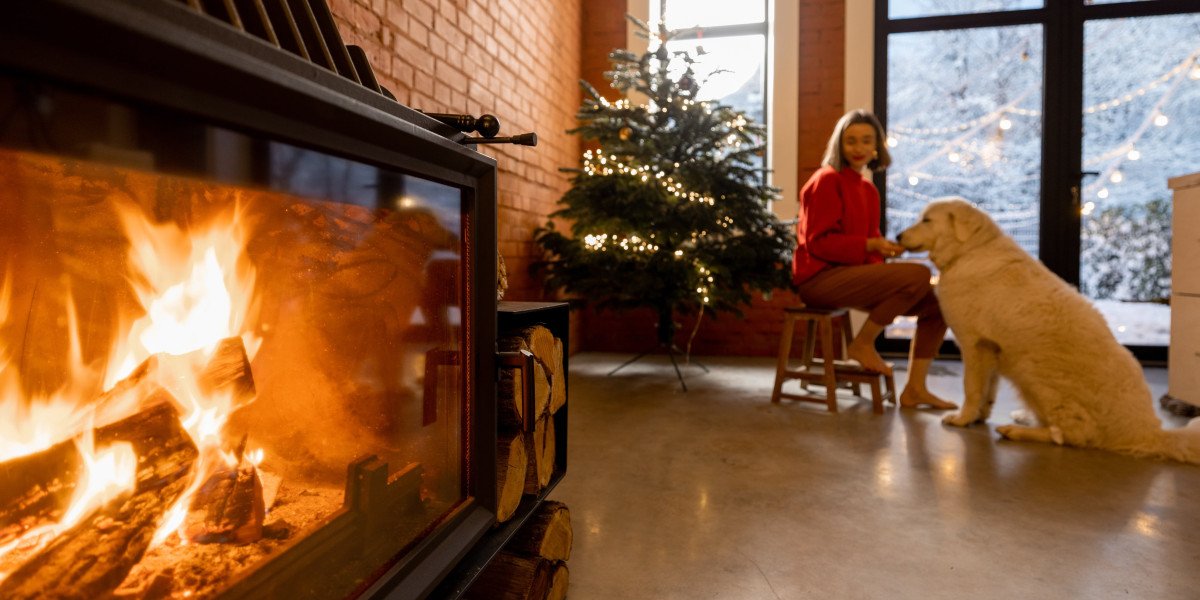Wood stoves, in contrast to traditional open fireplaces, are engineered to burn wood. This allows them to comply with stricter emission regulations.
Wood burning stoves provide glowing yellow flames, cozy crackling sounds, and that primordial sense of warmth. The smoke produced is contaminated by air pollutants such as benzene, formaldehyde, and polycyclic aromatic hydrocarbons.
Efficient
Fireplaces and stoves that burn wood offer a stunning and natural heat to your home, but they are also incredibly efficient. A top-quality wood burner could be eco-friendly up to 77%. It is essential to get the most benefit of your log stove in light of increasing energy costs. The good news is that it's now easier than ever before to do!
The moisture content of firewood is an important factor that determines how efficient a stove that burns wood is. We recommend using only seasoned wood that has been dried for at least one year and often two years. The more dry the wood the more efficiently it burns, which results in less smoke and harmful emissions.
Another great benefit of a wood-burning stove is that it's a low carbon source of fuel, which is excellent for the environment. If you buy locally-sourced wood, you can also help to support the active management and conservation of forests. This is great for wildlife.
The only thing a wood burning stove requires in terms of maintenance is that you regularly take away and eliminate the ash. It can be a bit of a hassle, but it is worth it to get the most heat from every log. Additionally, if you wait 2-3 days for the ashes to fully cool they can be used as an eco-friendly and non-toxic ice melt. They can also be used to polish jewellery and absorb smells.
A fireplace made of wood is a truly timeless classic. Although they're not as popular than gas fires but there's no denying the beauty and allure of a roaring fire. These fires are perfect for snuggling to on cold winter nights, and make a warm and inviting space in your home. A high-quality wood burner will pay for itself for many years. Our chimney sweeps are on hand to help you get the most value from your stove - give us a call today to find out more.
Low Carbon
Burners that burn clean and efficiently are among the most efficient ways to save the cost of logs while keeping your home warm. They also help local woodland management. This is a fantastic way to support wildlife in your local area.
Wood-burning fireplaces and stoves create very little pollution if they are maintained properly and are used with dry, seasoned firewood. However, if they are not maintained properly or are made of poor quality wood the smoke generated by them can contain fine particles (known as particulate pollution) which can cause irritation to the lungs and other organs. Carbon monoxide, air pollutants that are toxic such as benzene and formaldehyde, and polycyclic aromatic hydrocarbons are also found in. Inhaling this type of air pollution may cause lung irritation as well as wheezing, coughing, and asthma attacks and may even cause serious health issues such as heart disease, cancer, or premature death.
Many people are concerned that using a wood burning stove can cause climate change however this isn't necessarily true. Wood burning is a carbon neutral energy source. The wood absorbs carbon dioxide throughout its lifespan. When it is burned the carbon dioxide is released into the air.
Because the wood is harvested locally, it reduces the amount of pollution emitted in the process of transportation. It is important to use hardwoods that are seasoned and of high quality. They burn longer and more evenly than softwoods.
Modern wood stoves, including those manufactured by Charlton & Jenrick, emit much less pollution than older stoves. They are certified to meet 2020 EPA standards that are significantly more strict than previous emission limits.
To prevent a build-up of exhaust within your home, all wood burning stoves should be vented to the outside. By keeping flames above the logs, and ensuring you use dry, seasoned wood and all our clean burn and DEFRA exempt stoves can produce extremely clear exhaust and have particulate levels that are 60 percent or less below the DEFRA limit.
A wood-burning stove with an integrated unit or catalytic converter could be the best low carbon heating option. These units re-ignite the gases and particulates that were ignited during the initial combustion in a subsequent stage by mixing them with superheated air. They then channel the remaining particulates and gasses through a catalytic combustion combustor for the third and final combustion, reducing emissions to a level much lower than the standards set by the government.
Clean Burn
Cleanburn wood stoves burn fuel with the highest efficiency possible. This results in minimal dust emissions into the atmosphere when burning wood. The air management system of the stove controls the intake and ventilation of gases to ensure the combustion process is conducted in a controlled and sealed environment. It also regulates the height of the flame to maximise heat output and minimize emissions.
This means that your chimney and the surrounding area will be cleaner than older stoves. Particulate matter, also known as particle pollution, from incompletely burned wood can trigger respiratory issues, such as coughing and wheezing. It can also contribute to heart diseases as well as stroke, diabetes and other serious illnesses. The air pollution resulting from wood combustion is an important factor in poor urban air quality.
Smoke from poorly combusted wood contains fine particulate pollutants and dangerous air pollutants like carbon monoxide, as well as other dangerous air pollutants like nitrogen oxides and volatile organic compounds (VOCs), benzene and formaldehyde. These particles can penetrate deep into the lungs and other organs causing discomfort, damage and even death. Airborne dust can also damage surfaces within your home, giving them a gritty feel.
When you are using a fireplace that is wood-burning it is essential to use high-quality firewood that has been properly seasoned and dried. The most valuable woods for heating are hardwoods such as oak, ash and beech. Hardwoods are dense and have a higher BTU content than softwoods. They also provide more heat.
Check with your local authority to determine if they have any rules about wood burning. These could include nuisance/odor regulations and visible emissions or opacity limits for smoke.
If you have a wood burner with a glass door, it's important to keep the glass clean of dirt and deposits. You can use a dry towel or oven cleaner spray to do this. You can also add bicarbonate soda and water to the glass.
Regular maintenance of your stove and chimney is also essential. Regular chimney cleaning is required to remove creosote, and also to ensure that the flue works correctly. Also be sure to mark dates for regular inspections in your diary, as this will help you avoid costly repairs and extend the lifespan of your wood stove.
Low Maintenance
Wood burning fireplaces are very popular due to their natural warmth. However, this type of fire requires some upkeep and maintenance. The chimney, flue, and stove are all potential sources of house fires, if they're not cleaned and maintained regularly. Fireplaces are also an excellent source of heat when power is out, particularly in winter when snow storms can cause tree branches to fall and knock down under-hanging power lines.
Utilizing a wood burner to heat your home will reduce your carbon footprint substantially when compared to other fossil fuel sources such as gas. Modern wood stoves and inserts have been designed to meet EPA (Environmental Protection Agency) standards, which means they emit very little carbon dioxide. The more well-seasoned wood you use the more efficient the stove will be. You'll require less wood to achieve the same heat.
These fireplaces require some upkeep and care, including ensuring they are positioned away from the ignition source and that a screen is installed. Keeping the grate clear of debris and ash will help air flow, which will prevent the fire from dying too quickly and keep your home clean. You should have your chimney and stove swept at least twice per year to avoid creosote accumulation which could be a dangerous fire hazard and obstructions that could hinder circulation.
A wood burning stove needs to be kept in good order and it can take a while for a beginner homeowner to learn how to ignite, light and maintain a steady fire in the fireplace. Once you've mastered the art of burning, your wood burning stove will be a source for warmth and comfort within your home.
Fireplaces that burn wood have been in use in one form or another for over 500 years and have rediscovered their popularity because of their energy efficiency and sustainability, as well as the natural warmth and smell of real wood. If you're considering a new heater, talk with your local certified Regency dealer to learn more about the benefits of an insert or stove made of wood for your home.








